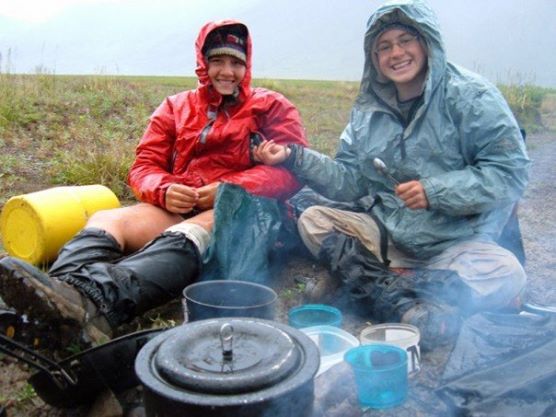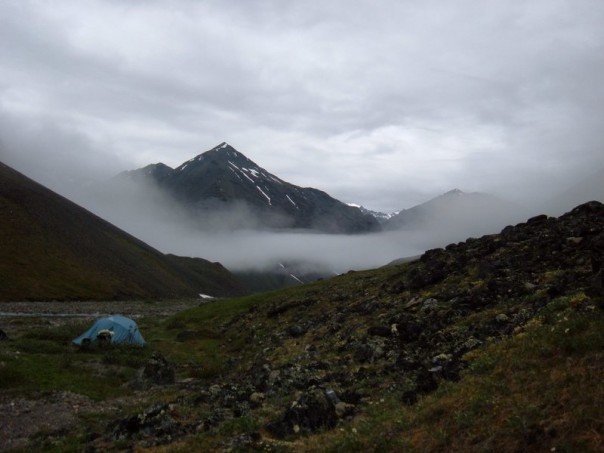So you’ve decided to forgo pay camping. Good for you. In the United States, there is little to no reason to need to pay for camping — especially in the West. While there are lots of places to free camp, finding them can be tricky. After all, if it were just as easy as pay camping, nobody would pay, right?
When choosing a place to camp, there are a few things to consider. First, is it legal? There is an endless supply of free campsites, but learning what is legal can sometimes be a challenge. Some cities, like Flagstaff, AZ, have altogether banned sleeping in a vehicle within the city limits. Others, such as the state of Oregon, allow people to pull over on any state road and sleep at anytime. It’s all about knowing the rules, or more importantly, where to find the rules.
National Forests
You can camp in any National Forest in the country for free for up to 14 days. An amazing thing about this is that generally, National Forests surround National Parks. The National Parks Service in this country is absolutely phenomenal (link the beginning part of this sentence to the article you reference below), and I highly recommend visiting as many as you can — one way to make this sustainable is to save money free camping in the National Forests on the edge of the park, instead of the pay sites within the park. After you have spent all day tromping around the National Park, reading the placards, using the bathrooms, FILLING YOUR WATER BOTTLES, and getting maps, all you have to do is drive out the exit and start looking for some forest service roads.
How do you find a forest service road? If you have decided to visit the local National Park, take time to go to the Visitor’s Center. Not only do these have small (or large) museums about the park, but the rangers are also generally very helpful. On my first cross-country road trip I found almost all of my free campsites through rangers in the National Parks.
If you know ahead of time where you will be stopping for the night, it is a great idea to pick up a US Forest Service (USFS) map of the forest service roads before even leaving home. You can buy these maps at select gas stations, map stores, and online. Sometimes these maps are available (for free and for pay) in the Visitor’s Center, sometimes they are not. If you are going to depend on buying one at the National Park, I recommend calling ahead to see if they carry them. Click here to find a national park. Even though you can make do without a map, it’s a whole lot easier when you know where you are and where you are trying to go. Forest service roads are not labeled as well as regular streets, and sometimes they are not labeled at all.
Lastly, learn the rules and know the fire safety rating for the area for the day. There are usually large Smokey the Bear signs indicating fire safety on your way into National Forests. Some National Forests allow fires, some don’t. Follow these rules. You may not think it’s a big deal to have a fire or pack your food poorly, but it is. If people break the rules, we will no longer have access to these amazing plots of land. Call your friends out if they are abusing the privilege of these lands, be accountable for yourself, and have fun.
 National Prairies
National Prairies
National Prairies follow the same rules and regulations as National Forests. The main difference between Prairies and Forests is their difference in landscape. If you are planning on staying in a National Prairie, make sure to check the weather first. You do not want to get caught in a lightning storm in a tent in the prairie. Prairies are also known for becoming extremely muddy in the rain, so if you drive out and it rains overnight, you may not be leaving for a few extra days. This is why it is important to always BRING EXTRA WATER. You never know when you will run into a situation and need more water than you thought.
Internet
There are some great websites and apps out there to help people find free campsites. As with everything online, be careful. If you ever get a bad feeling about a place, leave, even if you found out about the campsite from a trusted source. One of my personal favorites is www.freecampsites.net. This site is great for many reasons.
- It’s worldwide. Some countries (and states) have more than others, but it’s a good start.
- It’s a map layout. Finding campsites around you is incredibly easy with their zoomable map and legend. There are free sites in green, pay sites in red, and permit sites in blue.
- It’s user submitted. At the bottom of each selection there are directions, notes, and sometimes even pictures, to help you get there. These are submitted by other free campsite loving people just like you!
 Timing and Picking a Spot
Timing and Picking a Spot
You’ve got your maps, filled your water bottles, taken a poop, and are ready to find a spot. When I know that I will be free camping, I like to give myself plenty of time to find a site. I like to cook dinner where I will be spending the night, and I like to cook dinner in the light, so this means that I start thinking about camping pretty early. If you’re traveling solo, study your map before you start driving — you may need to take unmarked roads to your free campsite, and orienting yourself is important; Look at your map of the area. Is there a National Forest nearby? Can’t find one? Try looking for a National Park or Monument, there are generally National Forests surrounding those. Next, figure out which major roads will take you into the area and pick a place to get off of the large road. This is where your USFS map comes in handy.
Dispersed campsites are not the same as developed campsites. Dispersed campsites generally don’t look like campsites, and that is because they really aren’t campsites, simply cleared plots of land. Dispersed camping is allowed in National Forests, and pretty much means you can go in there with a car and pull over anywhere that is flat and set up shop. Make sure you know your car. Know how to fix a flat tire and the general height clearance of the bottom of your car. This will help you avoid unnecessary car trouble.
Dispersed campsites are not labeled on a map; it is up to you to find and use them. While this can sound a little daunting, I think it is just the greatest gift to the car camper. You have all the power, you get to choose anywhere you want to camp. This does mean that other people have this power. Don’t be surprised if you pass other people camping on Forest Service land on any given weekend. Shooting is allowed in most National Forests so be aware of other campers.
Find this article interesting or helpful? Like or share it on facebook!
